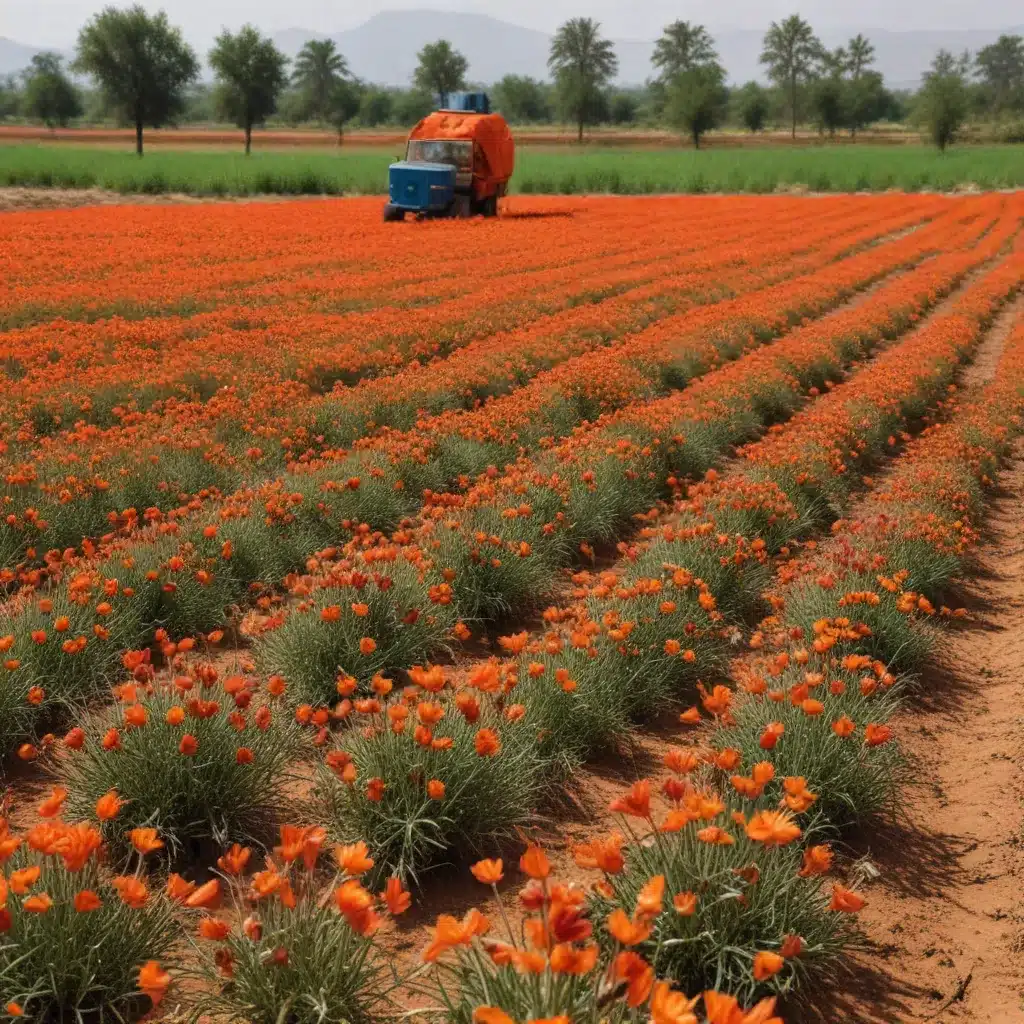
The Rise of Smart Farming: Harnessing IoT for Saffron Cultivation
In the ever-evolving landscape of agriculture, technological advancements are transforming the way crops are cultivated and managed. One such crop that has garnered significant attention is saffron – the world’s most expensive and legendary spice. Saffron, renowned for its unparalleled aroma, flavor, and medicinal properties, has faced a dramatic decline in global cultivation due to various environmental factors and traditional farming limitations. However, the emergence of the Internet of Things (IoT) has opened new avenues for optimizing saffron production, and India is poised to lead the way in this innovative approach.
The challenges faced in traditional saffron cultivation are multifaceted. Rapid climate change, fluctuating light intensity, soil pH imbalances, and unpredictable water availability are just a few of the environmental factors that have hindered saffron’s growth. Conventional farming methods simply cannot effectively control these variables, leading to a steady decline in saffron yields globally.
Embracing IoT for Saffron Cultivation: A Transformative Approach
The solution lies in the integration of IoT technology into saffron cultivation. By leveraging a network of sensors, microcontrollers, and cloud-based data analysis, farmers can now monitor and manage the critical agronomical factors that influence saffron growth. This IoT-based system offers a comprehensive solution to the challenges faced in traditional saffron farming.
The proposed IoT-based saffron cultivation system consists of a multi-layered architecture, each serving a specific purpose:
-
Perception Layer: This layer encompasses the physical sensors and actuators responsible for data collection and environmental control. Sensors such as temperature, humidity, soil moisture, pH, and light intensity monitors track the crucial factors affecting saffron growth, while actuators like pumps, fans, and LED lights regulate the greenhouse environment.
-
Network Layer: This layer facilitates the seamless transfer of data from the sensors to the cloud, enabling remote monitoring and decision-making.
-
Service Layer: This layer is the heart of the system, where the collected data is analyzed and compared to optimal thresholds. Based on the insights, the system can automatically adjust environmental parameters to maintain the ideal conditions for saffron cultivation.
-
Application Layer: The final layer provides the farmer with a user-friendly interface to monitor, control, and receive real-time alerts on the saffron crop’s status, empowering informed decision-making.
The IoT-based saffron cultivation system offers several key advantages:
1. Precise Environmental Control: By continuously monitoring and adjusting temperature, humidity, soil moisture, pH, and light intensity, the system ensures that the saffron crop thrives in its optimal growing conditions, maximizing yield and quality.
2. Automated Irrigation and Nutrient Management: The system precisely controls the water and nutrient delivery, ensuring the saffron plants receive the right amount of resources at the right time, reducing wastage and promoting sustainable cultivation.
3. Real-Time Monitoring and Alerts: Farmers can remotely monitor the saffron crop’s progress, receive instant notifications of any deviations from the desired parameters, and take immediate corrective actions, enabling proactive management.
4. Data-Driven Decision-Making: The wealth of data collected by the IoT system can be used to analyze historical trends, predict future challenges, and make informed decisions to optimize saffron cultivation practices.
Implementing IoT-Based Saffron Cultivation in India
India, being one of the leading producers of saffron, is well-positioned to embrace this transformative IoT-based approach. By leveraging the country’s technological prowess and the rising popularity of smart farming, Indian saffron growers can overcome the limitations of traditional cultivation and unlock new levels of productivity and sustainability.
The implementation of the IoT-based saffron cultivation system in India involves the following key steps:
-
Sensor Installation and Deployment: Strategically placed sensors throughout the saffron greenhouse or cultivation area will monitor the critical environmental factors, transmitting real-time data to the central control unit.
-
Microcontroller Integration: A powerful microcontroller, such as the Arduino Nano 33 IoT, will serve as the brain of the system, processing sensor data, triggering actuator responses, and communicating with the cloud platform.
-
Cloud-Based Data Management: The sensor data will be securely transmitted to a cloud-based platform, enabling remote access, data storage, and advanced analytics to support informed decision-making.
-
User-Friendly Interface: Farmers will be able to monitor and control the saffron cultivation system through a mobile application or web-based dashboard, providing real-time insights and allowing for remote adjustments.
-
Sustainable Power Supply: To ensure the system’s reliability and energy efficiency, a combination of solar panels and battery storage will be integrated, reducing the reliance on grid power and promoting sustainable saffron cultivation.
By implementing this IoT-based saffron cultivation system, Indian farmers can expect to see a significant increase in saffron yield, improved crop quality, and enhanced resource efficiency. The ability to precisely control environmental factors, automate irrigation and nutrient management, and receive real-time alerts will revolutionize saffron cultivation, making it more resilient to the challenges posed by climate change and traditional farming limitations.
Moreover, the data-driven insights generated by the IoT system can aid in the development of novel saffron cultivation techniques, enabling continuous improvement and adaptation to evolving environmental conditions. This holistic approach to saffron cultivation, facilitated by the power of IoT, positions India as a global leader in sustainable and precision-driven saffron production.
As the world’s demand for saffron continues to grow, the adoption of IoT-based cultivation systems in India will not only benefit the country’s saffron growers but also contribute to the global availability of this precious spice, while upholding the principles of environmental consciousness and resource optimization.












